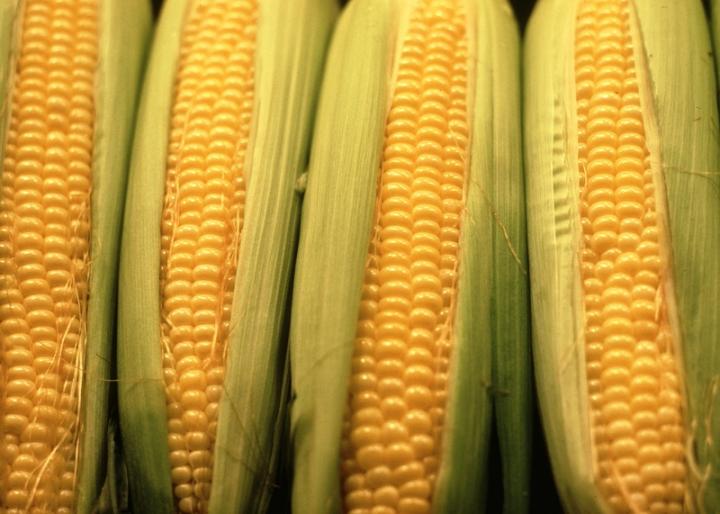
Sweet corn is an annual with yellow, white, and bi-colored ears. A long, frost-free growing season is necessary after planting. Sweet corn is wind-pollinated, so it should be planted in blocks, rather than in single rows. Early, mid, and late-season varieties extend the harvest. If you miss the optimal harvest time, corn will go downhill fast as sugars convert to starch.
Planting
- Corn is picky about its soil. Work in aged manure or compost the fall before planting and let over winter in the soil.
- Starting seeds indoors is not recommended.
- Plant seeds outdoors two weeks after the last spring frost date.
- Make sure soil temperature is above 60 degrees for successful germination. (Up to 65 for super sweet varieties.) In colder zones, the ground can be warmed by a black plastic cover if necessary. Plant seeds through holes.
- Plant seeds 1 inch deep and 4 to 6 inches apart. Rows 30 to 36 inches apart.
- For sufficient pollination, plan your plot right. Don’t plant two long rows, rather, plant corn blocks of at least four rows.
- You may choose to fertilize at planting time, corn is meant to grow rapidly. If you are confident that the soil is adequate, this can be skipped.
- Water well at planting time.
Care
- When your plants are 3 to 4 inches tall, thin them so they are 8 to 12 inches apart.
- Be careful not to damage the roots when weeding.
- Soil must be well drained and able to keep consistent moisture.
- In dry conditions, be sure to keep corn well watered due to its shallow roots. Water at a rate of 5 gallons per sq yard. Mulch helps reduce evaporation.
Pests/Diseases
Click on the links below to learn how to manage different pests in the garden!
- Raccoons
- Spotted Cucumber Beetles
- Flea Beetles
- Cutworms
Harvest/Storage
- Harvest when tassels begin to turn brown and cobs start to swell. Kernels should be full and milky.
- Pull ears downward and twist to take off stalk.
- Sweet corn varieties lose their sweetness soon after harvesting.
- Prepare for eating or preserving immediately after picking.
- Sweet corn freezes well, especially if removed from ears before freezing. Learn how to properly freeze corn.
- Corn kernels can also be harvested for other purposes, like corn-filled therapy packs.

Recommended Varieties
There are three types of sweet corn: Normal, sugar enhanced and super sweet. Each one contains a different level of sucrose, changing the flavor and texture of the corn. Sweeter varieties will stay sweeter for longer after harvest.
- ‘Iochief’ Midseason normal-sugar variety. Yellow.
- ‘Silver Queen’ normal sugar-variety. Resistant to some bacterial diseases. White.
- ‘Challenger Crisp n Sweet’ supersweet variety, resistant to some diseases, high yield. Yellow.
- ‘Pristine’ sugar enhanced variety, good taste. White.
Wit & Wisdom
- Baby corn is produced from regular corn plants that are harvested early, while the ears are immature. Regular sweet corn, sugar-enhanced sweet corn, and supersweet corn varieties can be used, along with a few varieties that are specific for baby corn.
- If your corn shucks harder than usual, prepare for a cold winter.
- Corn is great for eating but also has so many other uses including medicinal. Learn more about corn for natural health.
- Learn more fun, witty facts about corn.
Recipes
- Corn Salad
- Creamed Corn
- Corn on the Cob
Cooking Notes
If too much hot pepper or spice has been added to a soup or stew, adding a can of sweet corn can help.
Popcorn is also a favorite snack if you have leftover kernels. Learn how to make homemade popcorn here.







